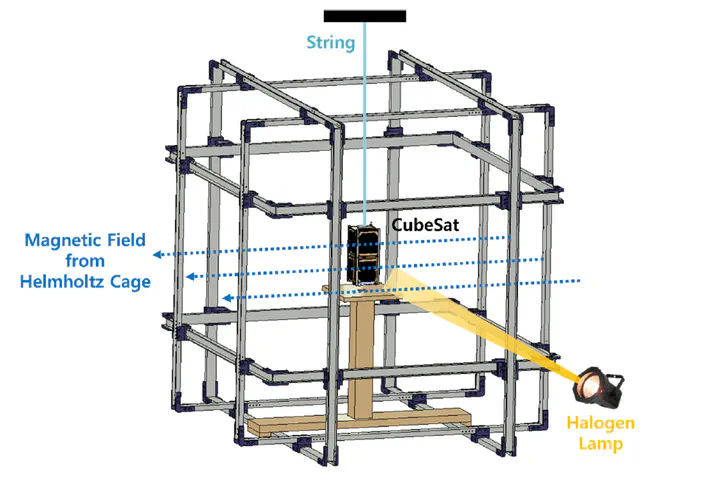Development of Hardware-In-the-Loop Simulation for CubeSat Platform: Focusing on Magnetometer and Magnetorquer

Abstract
This study is aimed at addressing the practical challenges of conducting hardware-in-the-loop simulation (HILS) for a CubeSat attitude determination and control system (ADCS) with a magnetometer and magnetorquer. The inherent problem of magnetometer time-varying bias is typically addressed using compensation methods. Because compensation is performed in orbit, the application of such methods to HILS is difficult. In addition, the magnetorquer has limited applicability to HILS if only magnetorquers without reaction wheels or control moment gyroscopes are used. In general, HILS for CubeSat uses air bearing; however, it cannot be applied to a solely magnetorquer-based ADCS owing to the inertial moments and center of gravity effects induced by the air bearing table. To overcome these challenges, in this study, the magnetometer reliability is enhanced by compensating for temperature, current, and iron effects, which are modeled experimentally, in the pre-launch stage. Then, a novel single axis-based HILS for CubeSats is developed to minimize the disturbances by the ground environment. The torque limit of the magnetorquer is supplemented through a magnetic field generated by a Helmholtz cage. The proposed HILS environment is mathematically modeled to simulate the performance of the CubeSat ADCS, and its reliability is ensured by comparing the simulation with real-time experimental results. To validate the usefulness of the proposed HILS, it is applied to an ADCS based on a low-cost sensor fusion extended-Kalman filter and a linear quadratic regulator controller commonly used in CubeSats. The simulation and experimental results are well matched, demonstrating the potential of the proposed framework.